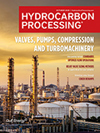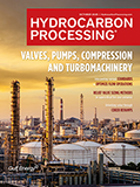Process Control
Applying tools to strengthen safety and risk management
The same characteristics that make hydrocarbons useful as fuels can also make refineries, and any other areas where processing or storage takes place, potentially dangerous.
Digital: Harnessing the power of digital platforms to improve plant performance and increase customer success
Digital online platforms offer significant potential benefits across the oil and gas value chain by employing advanced analytical tools and near-real-time access to technical expertise to improve day-to-day plant performance.
Virtual analyzers: Shaping the future of product quality
Product quality directly drives price and where hydrocarbons can be delivered.
Editorial Comment: Optimizing operations by advancing process controls, instrumentation and automation technologies
When driving by or visiting a refinery or petrochemical plant, one cannot help but gaze at the expansive sea of metal towers.
Selecting the right rotary control valve
The primary function of a control valve is to regulate flow. Accurate, consistent and reliable performance of this task affects many important process unit or plant metrics,
Extracting business value from digitalization in oil and gas
Most oil and gas companies are investing in digitalization; however, they often fail to move beyond proof of value (PoV) or pilot projects.
Engineering Case Histories: Case 110: A checklist for vibration analysis
Periodically, I receive questions from engineers around the world on why a piece of critical machinery is vibrating excessively.
Increase uptime by reducing systematic failure risk
Pondering the history of industrial incidents, it would be incorrect to assume that most failures occur randomly.
Business Trends: Autonomous operations in process manufacturing—Part 2
The purpose of this article is to demonstrate an autonomous operations (AO) vision, along with its feasibility, by conceptualizing a roadmap where meaningful progress can be achieved in a horizon of 3 yr–20 yr.
Mitigate transient/hydraulic surge in liquid pipelines with nozzle check valves
Liquid pipelines often come across hydraulic transients, which can damage pipelines and associated equipment (i.e., pumps, valves, stations, etc.).

- Asian gasoline margin spikes to highest since August 2023 11/14
- Lukoil-Moldova grants free use of airport fuel terminal to government amid U.S. sanctions 11/14
- Croatia rejects Russian vacuum gasoil cargo after U.S. sanctions 11/14
- Bulgaria wins UK sanctions reprieve on refinery, petrol stations 11/14
- China's Sinochem shuts one crude unit at Quanzhou after fire 11/14
- Enbridge approves $1.4-B project to boost Canadian oil flows to U.S. refiners 11/14




